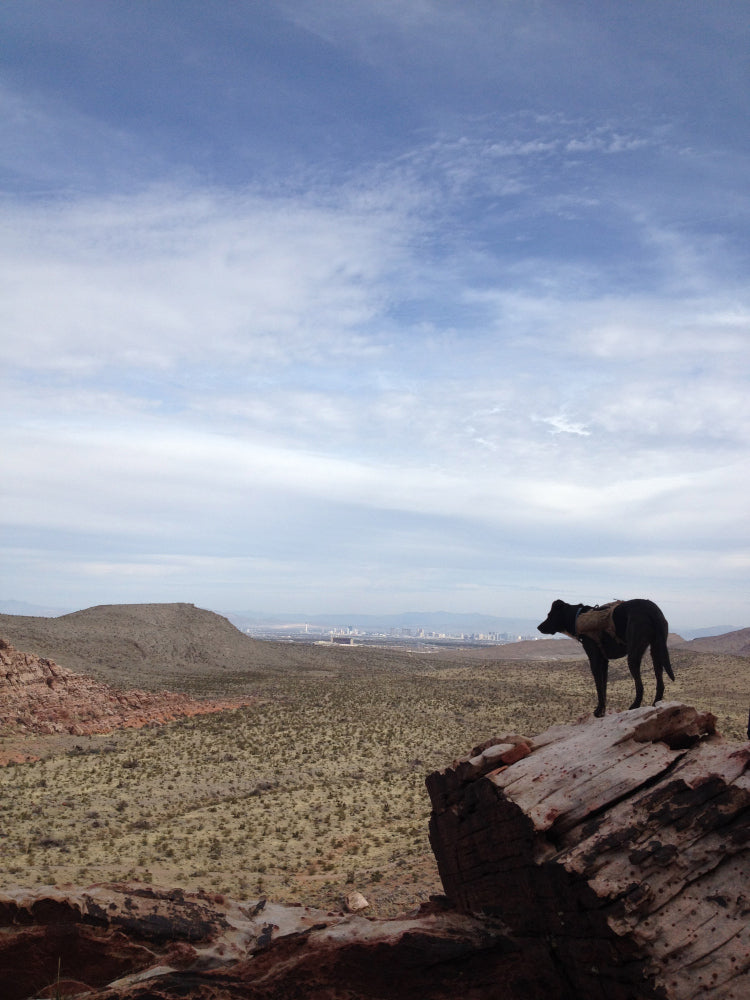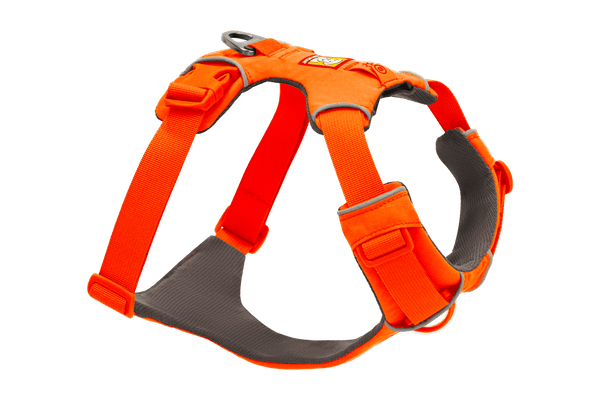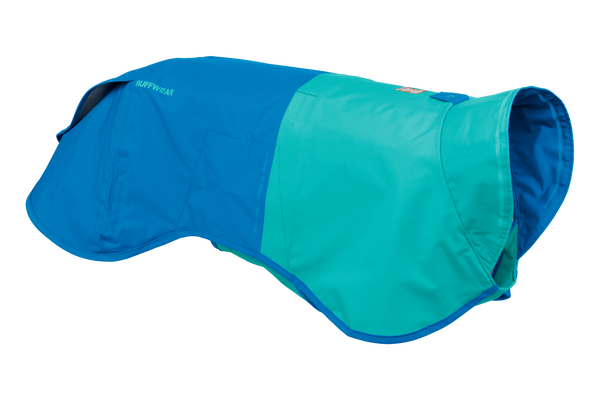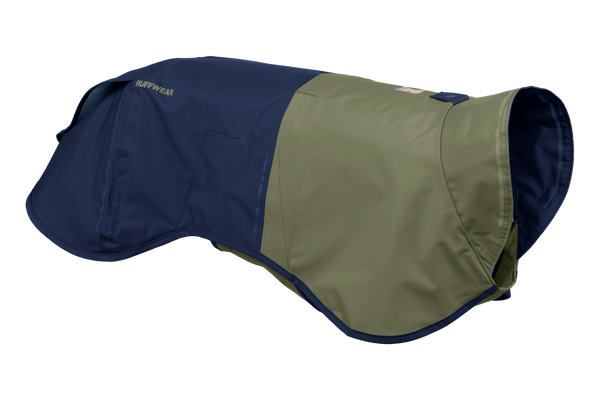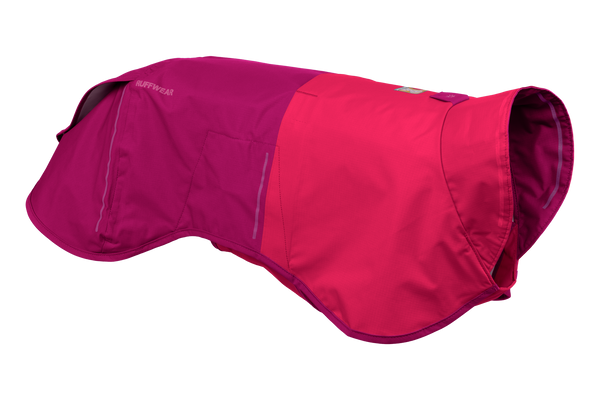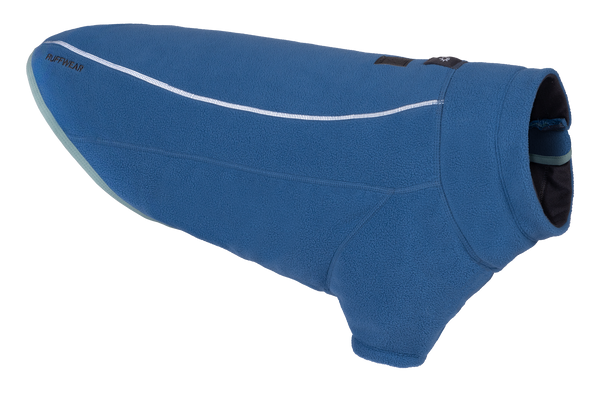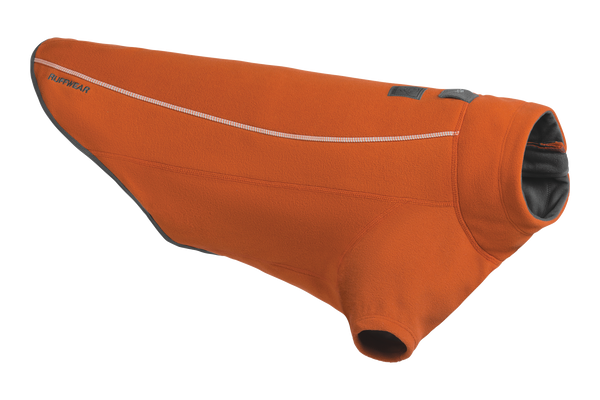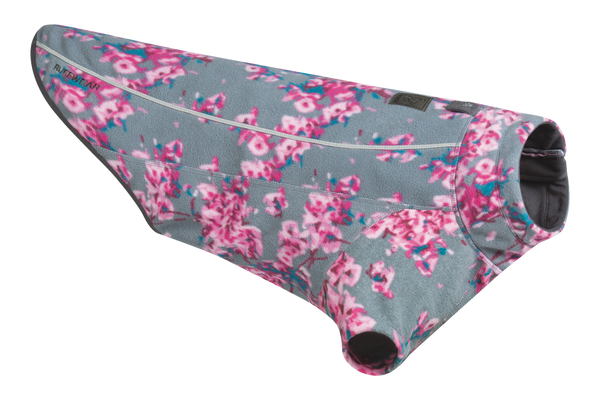Mein Hund ist mein Co-Pilot: Tipps für das Van-Leben mit pelzigen Freunden
Das Leben ist schöner mit Hunden. Warum also sollten Sie sie zurücklassen, wenn Sie unterwegs sind? Da das Leben im Van oder Auto immer beliebter wird, um möglichst viel Zeit im Freien zu verbringen, haben mich viele Leute gefragt, wie man mit Hunden unterwegs leben kann. Ob Sie derzeit in einem Auto leben und über eine Adoption nachdenken, ob Sie in ein Auto umziehen und Ihren Welpen mitnehmen möchten oder ob Sie einfach einen längeren Roadtrip mit Ihrem besten Kumpel machen möchten, hier sind einige Antworten auf meine am häufigsten gestellten Fragen und Tipps für das Leben unterwegs mit Hunden!
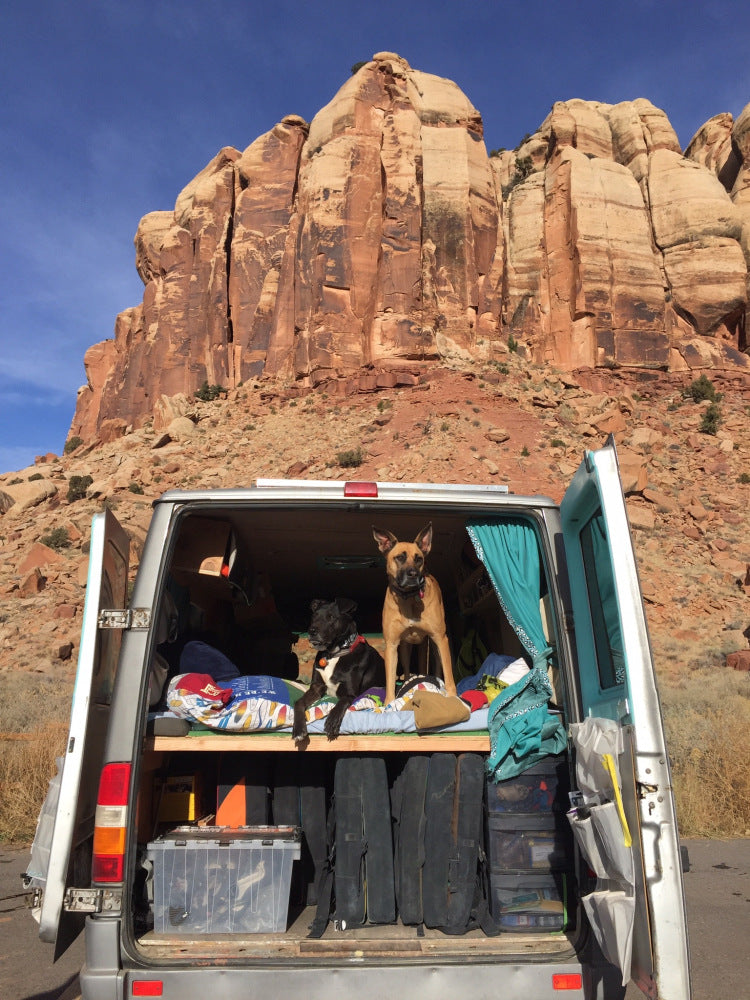
Fotos bereitgestellt von Laura Patton von @mobileroamers
Häufig gestellte Fragen
Was machen die Hunde, während Sie bei der Arbeit sind (oder beim Abendessen, beim Einkaufen, im Skigebiet oder an einem Ort, wo sie nicht erlaubt sind usw.)?
Das ist die Frage, die mir am häufigsten gestellt wird! Für uns ist der Van unser Zuhause. Wir leben das ganze Jahr über Vollzeit darin, und Titan und Star fühlen sich dort genauso wohl wie in einem normalen Haus. Wir können die Temperatur mit Sonnenblenden und unserem Dachventilator (und da wir nicht in einem heißen Klima leben) sowie Decken und Jacken im Winter regeln, sodass es ihnen nichts ausmacht, wenn sie ein bisschen draußen bleiben müssen. Wenn Sie in einem heißeren Klima unterwegs sind, benötigen Sie wahrscheinlich eine eingebaute Klimaanlage, die auch bei ausgeschaltetem Fahrzeug laufen kann. Letzten Sommer, als wir Vollzeit arbeiteten, konnten wir ein kleines Stück Land mieten und einen kleinen Zaun um den Van bauen, damit sie nach Belieben ein- und aussteigen konnten. Titan und Star machen fast alles mit uns, aber wenn sie „zu Hause“ abhängen, bekommen sie vorher und nachher viel Bewegung.

Was ist, wenn Sie einen Nationalpark besuchen möchten?
Hunde dürfen sich in Nationalparks nur auf erschlossene Bereiche beschränken, wozu normalerweise Campingplätze, Parkplätze und Picknickbereiche gehören. Wanderwege und das Hinterland sind ihnen daher untersagt. Glücklicherweise grenzen viele Nationalparks an Land des BLM oder Forest Service, wo es kaum oder gar keine Vorschriften gegen Hunde gibt und Sie ein ähnliches Gelände wie im Park selbst finden können. In manchen Parks gelten je nach Jahreszeit andere Regeln. Beispielsweise sind einige Parkstraßen, die im Winter schneebedeckt und für den Verkehr gesperrt sind, während dieser Zeit zum Langlauf für Menschen und Hunde geöffnet, da die Straßen technisch gesehen ein erschlossenes Gebiet sind. Darüber hinaus können Sie nach Nationaldenkmälern und State Parks suchen, da Hunde dort oft erlaubt sind. Wenn Sie in Kanada unterwegs sind, sind Hunde in Provincial Parks (der kanadischen Version der Nationalparks) erlaubt, solange sie an der Leine sind.
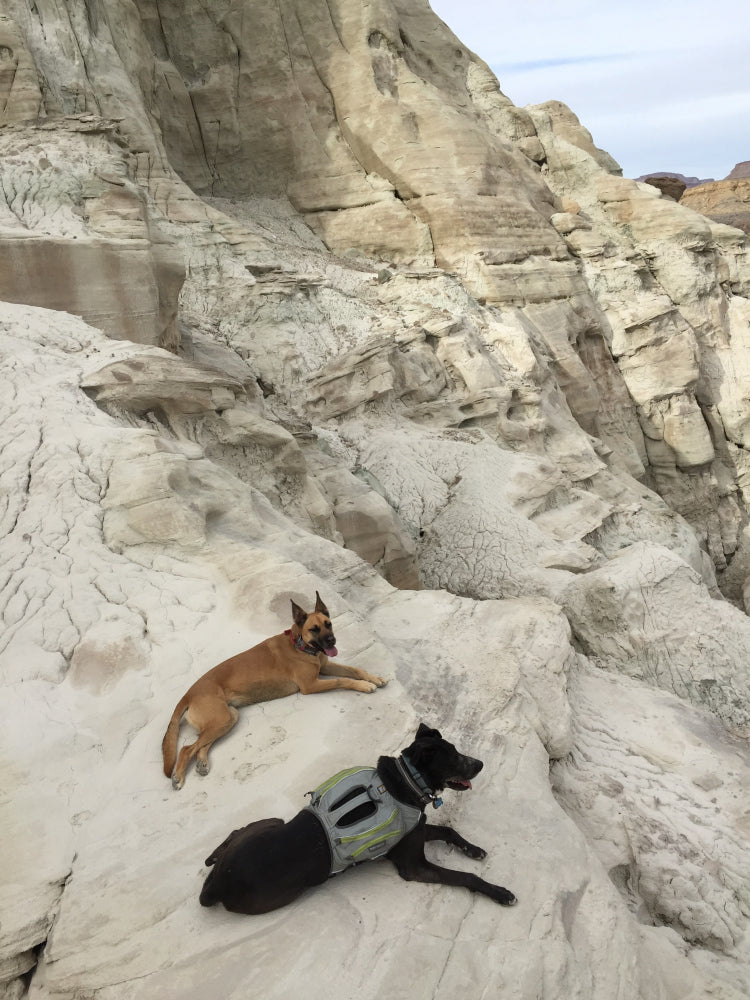
Wie kommt man mit großen Hunden auf kleinem Raum zurecht? Wo schlafen sie?
Titan und Star sind ziemlich groß – sie wiegen jeweils 75 und 60 Pfund. Unser kleiner Platz ist für uns gut, denn wenn Sie unterwegs sind oder in einem Van leben, verbringen Sie viel mehr Zeit mit Ihrem Hund als in einer „normaleren“ Situation, was Ihrem Hund hilft, sich an Ihren Lebensstil anzupassen, sich an Ihre Gewohnheiten zu gewöhnen und seinen Platz im Van zu finden. Außerdem werden Sie viel Zeit draußen verbringen und die weite offene Umgebung erkunden und Abenteuer erleben. Die ganze Bewegung macht Ihren Welpen müde, wodurch er im Van ruhiger wird. Was das Schlafen betrifft, finden Sie Titan und Star ausgestreckt auf dem Bett, während ihre Menschen in die Ecke gequetscht sind.

Wie halten Sie den Van sauber, trocken und schlammfrei?
Stellen Sie sicher, dass Sie ein spezielles Hundehandtuch haben und, falls Ihr Hund im Bett schläft, eine Hundedecke. Wir bedecken unser Bett mit einem alten Schlafsack ohne Reißverschluss, sodass unsere Bettwäsche nicht nass wird, selbst wenn die Hunde nass oder schmutzig hereinkommen. Ein bisschen Schlamm und Hundehaare sind garantiert, aber wenn Sie warten, bis alles ein bisschen trocken ist, können Sie alles problemlos zur Tür hinausfegen!

Was ist mit dem Tierarzt?
Wir haben an einigen wichtigen Orten Tierärzte, die wir mögen und die wir jedes Jahr besuchen. So können wir die jährlichen Untersuchungen der Hunde bei uns bekannten Tierärzten durchführen lassen. Achten Sie bei unerwarteten Tierarztbesuchen darauf, dass Sie immer den Impfpass Ihres Hundes dabei haben, und fragen Sie herum – örtliche Tierbesitzer sind im Allgemeinen sehr hilfsbereit und geben Empfehlungen für Tierärzte in der Gegend.
Tipps
- Seien Sie flexibel. Nicht immer läuft alles wie geplant und wenn Sie sich auf den Lauf der Dinge einlassen, ersparen Sie sich jede Menge Stress. Sie wachen auf, um eine lange Wanderung zu machen, und Ihr Hund ist völlig erledigt? Dann halten Sie sich an Ihren Plan B und verbringen einen entspannten Tag damit, das Auto neu zu organisieren oder Lebensmittel einzukaufen.
- Bewahren Sie einen großen Wasserbehälter in Ihrem Fahrzeug auf. Manchmal gibt es nur wenige Möglichkeiten, Wasser nachzufüllen. Wenn Sie einen großen Behälter haben (wir haben 7 Gallonen im Van) und ihn bei jeder Gelegenheit auffüllen, ist sichergestellt, dass Ihrem Hund nie der unverzichtbare frische Napf mit Wasser ausgehen muss.
- Bringen Sie Ihrem Hund wichtige Kommandos für die Autofahrt bei, wie „mach Pipi“ und „lade rein“. Wenn Ihr Hund sich scheut, an unbekannten Orten auf die Toilette zu gehen, sollten Sie ihm vor der Fahrt unbedingt das Kommando „mach Pipi“ beibringen. Das Kommando „lade rein“ ist für uns entscheidend – die Hunde wissen, dass sie mit dem, was sie gerade tun, aufhören und reinspringen müssen.
- Bleiben Sie aktiv! Denken Sie daran, dass ein müder Hund ein guter Hund ist. Je mehr Bewegung und Aktivität Ihr Hund bekommt, desto zufriedener wird er sein, wenn es abends Zeit ist, sich zum Schlafen auf der Ladefläche des Trucks zusammenzurollen. Außerdem ist das Rauskommen und Erkunden neuer Orte ein guter Grund, überhaupt auf die Straße zu gehen!
Haben Sie weitere Fragen oder Ideen, die Sie uns mitteilen möchten? Hinterlassen Sie unten einen Kommentar oder kontaktieren Sie Laura unter Instagram @mobileroamers.
